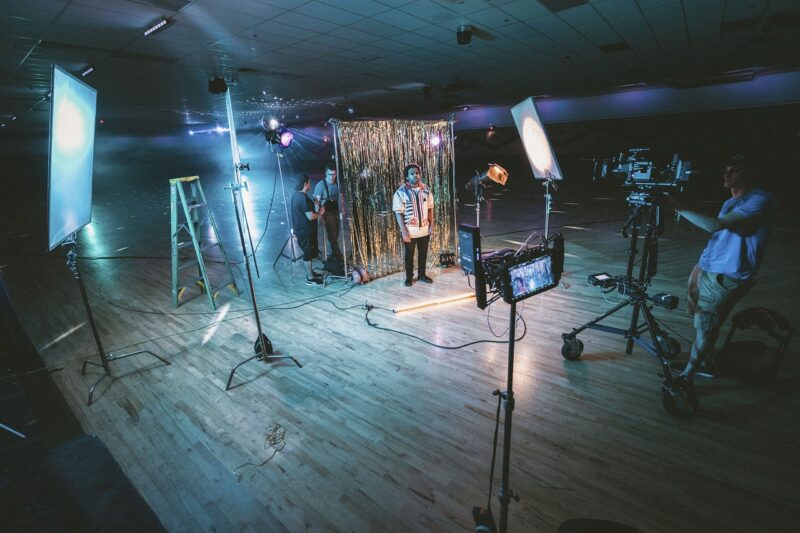
The world of movie-making is a captivating blend of art, technology, and storytelling. Behind every great film lies a complex, intricate process that transforms ideas into a visual masterpiece. Understanding this process can deepen our appreciation for the cinematic experiences we enjoy on the big screen. In this article, we will take you through the fascinating journey of how a movie is made, from the initial concept to the final cut.
1. Concept and Development
The journey of a movie begins long before a camera rolls. It all starts with a concept, often shaped by an idea, a book, or even a historical event. Writers and producers brainstorm potential storylines, themes, and characters. They work collaboratively to develop a script, which serves as the foundation of the film. This initial script goes through multiple revisions as feedback from peers, producers, and sometimes test audiences is incorporated.
Additionally, this stage may involve creating a pitch for studios or potential investors, outlining the story, visual style, and budget estimates. The treatment (a more detailed version of the concept) becomes essential for attracting partnerships that can fund the film.
2. Pre-Production
Once the script is finalized, the pre-production process begins. This stage involves meticulous planning and coordination. Key components of pre-production include:
- Casting: Selecting the right actors to portray the characters. Casting directors audition numerous actors to find the perfect fit for each role.
- Location Scouting: Finding suitable locations that resonate with the story’s setting. This includes everything from city streets to expansive landscapes.
- Budgeting and Financing: Finalizing the budget and securing funding sources, including investors and production companies. This budget covers everything from actors’ salaries to special effects and marketing costs.
- Storyboarding: Creating visual plans for scenes with storyboards. This step is crucial for planning the film’s flow, composition, and camera angles.
In this stage, many decisions are made about the film’s style, including its visual aesthetics, costume design, and cinematography.
3. Production
Production is where all the planning comes to life. This phase typically involves:
- Shooting: Filming takes place according to the schedule and storyboard, often with multiple takes for each scene to capture the best performance. This phase can last from a few weeks to several months, depending on the scale of the project.
- Sound and Lighting: Cinematographers and sound engineers are crucial during filming. They adjust lights, set up microphones, and monitor sound quality to ensure everything is captured perfectly.
- On-Set Direction: The director plays a vital role during production, guiding actors and crew to bring the script to life. Each scene must encapsulate the director’s vision for the film’s tone and narrative.
This phase is characterized by collaboration. Everyone from the director to the production assistants works together to tackle challenges as they arise, ensuring everything stays on track.
4. Post-Production
Once filming wraps, the post-production phase begins. This crucial step involves editing and refining the raw footage into a cohesive story. Key activities in post-production include:
- Editing: Editors work on the footage, selecting the best takes, cutting unnecessary scenes, and assembling the film’s sequence. Color correction and visual effects may also be added during this stage to enhance visuals.
- Sound Design: Sound engineers create the film’s audio landscape, including sound effects, voiceovers, and background music. This part is vital for creating emotional responses in the audience and enhancing the storytelling experience.
- <Visual Effects: CGI specialists may be called on to create special effects, from explosions to fantastical creatures, helping realize elements that cannot be captured via traditional filming methods.
- Finalizing the Score: The film’s soundtrack is composed, blending themes that will resonate throughout the film. Scores can amplify emotional moments and contribute significantly to the film’s atmosphere.
Post-production can take months, and it requires constant communication among various departments to achieve the desired final output.
5. Marketing and Distribution
Once the final cut is ready, it’s time to share the film with the world. The marketing team crafts strategies to promote the film across various platforms. This stage often includes:
- Trailers and Teasers: Highlighting key moments from the film to attract audience interest and spark anticipation.
- Film Festivals: Many films debut at festivals like Sundance or Cannes, where they can gain critical acclaim and attract distributors.
- Merchandising: Some films also benefit from merchandise that ties into the film’s themes or characters, adding to the promotional strategy.
- Theatrical Release: Finally, the film is released to theaters, where audiences can experience what the entire team has worked on for months or years.
With advancements in technology, films can also be distributed on streaming platforms, broadeniing their accessibility and allowing more people to enjoy them.
6. Conclusion
The process of movie-making is a remarkable collaboration that combines creativity with technical expertise. From the initial spark of an idea to the spectacle of a finished film, each stage is crucial to creating a cinematic experience. By understanding the intricate journey behind the scenes, we can appreciate the dedication, skill, and artistry that truly makes films special. Next time you watch a movie, remember the countless hands that contributed to bringing that story to life; it’s a journey well worth knowing.
Ultimately, the world of film production showcases the beautiful interplay of human creativity and technology, a reflection of our society’s cultural values and artistic aspirations.







